Hi all,
When I was tuning I used the "Esperado method".
First with scope and signal generator to get the waveform clean by adjusting caps.
After this listening and tuning the input filter by ear.
I have never done input filter adjusting by listening tests before. My point was that this step has very big impact on the sound. Much bigger than I thought.
I also had two other amps behind a switch so I could compare (Symasym and one Graham Maynards Class-a amp).
Jarno
When I was tuning I used the "Esperado method".
First with scope and signal generator to get the waveform clean by adjusting caps.
After this listening and tuning the input filter by ear.
I have never done input filter adjusting by listening tests before. My point was that this step has very big impact on the sound. Much bigger than I thought.
I also had two other amps behind a switch so I could compare (Symasym and one Graham Maynards Class-a amp).
Jarno
Hi all,
When I was tuning I used the "Esperado method".
First with scope and signal generator to get the waveform clean by adjusting caps.
After this listening and tuning the input filter by ear.
I have never done input filter adjusting by listening tests before. My point was that this step has very big impact on the sound. Much bigger than I thought.
I also had two other amps behind a switch so I could compare (Symasym and one Graham Maynards Class-a amp).
Jarno
Thanks clearing that.
Wonder if to reproduce most true wave forms from system (not amp device) could benefit that when you do the step "First with scope and signal generator to get the waveform clean by adjusting caps", you connect signal generator to the source that is then connected to power amp, instead of connecting signal generator direct to power amp. Say this because when simulating such filter at amp input, if changing source impedance visual plots change heavily, and signal generator output impedance can't be expected to match output impedance of ones live device. Gives some work but if system sound benefit this local matching/tuning, worth it for diy'ers.
Some first measurments.Wolverine is something was absent from my collection.
Now it's here.!
Up to now i have test only bandwidth from this amplifier.
3.6Hz up to 411Khz (-3db) tested at 5vRMS OUT/6R dummy load.
Seems that is necessary to make some improvements.
Ι have built this INP using what i have on hand at this moment.
First picture ,A.C volt out(NO LOAD) when input is shorted.
Second picture.D.C offset.
All other pictures as explained on last picture.
Please comments ....
Attachments
-
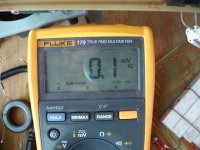 DSC07908.JPG565.4 KB · Views: 577
DSC07908.JPG565.4 KB · Views: 577 -
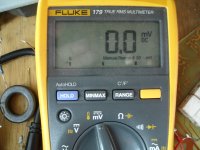 DSC07909.JPG543.6 KB · Views: 534
DSC07909.JPG543.6 KB · Views: 534 -
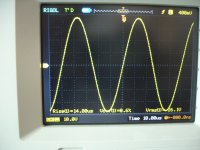 DSC07910.JPG585.8 KB · Views: 524
DSC07910.JPG585.8 KB · Views: 524 -
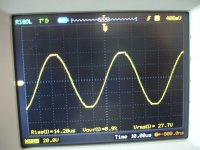 DSC07911.JPG530.1 KB · Views: 519
DSC07911.JPG530.1 KB · Views: 519 -
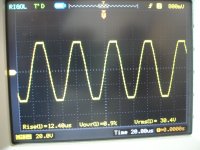 DSC07912.JPG529.8 KB · Views: 482
DSC07912.JPG529.8 KB · Views: 482 -
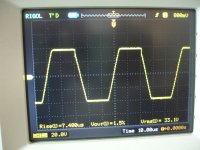 DSC07913.JPG523.5 KB · Views: 104
DSC07913.JPG523.5 KB · Views: 104 -
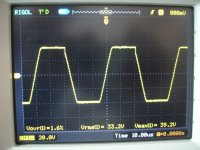 DSC07914.JPG543.1 KB · Views: 103
DSC07914.JPG543.1 KB · Views: 103 -
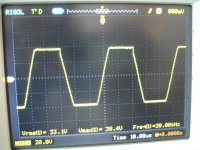 DSC07915.JPG539.4 KB · Views: 116
DSC07915.JPG539.4 KB · Views: 116 -
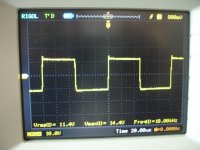 DSC07916.JPG591.3 KB · Views: 146
DSC07916.JPG591.3 KB · Views: 146 -
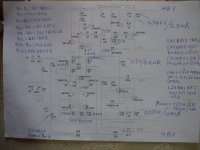 DSC07924.JPG523.9 KB · Views: 206
DSC07924.JPG523.9 KB · Views: 206
Last edited:
Why bother, if you level them up they all sounds the same.
They can not sound all the same.
Greetings
They can not sound all the same.
Greetings
hehehe some of us knows that clearly

Well, this need some nuances, on my point of view.Without a doubt, speakers have the biggest impact on audible differences.
Speakers have, of course, obvious 'signature'. Due to their differences in response and phase curves, damping, membranes resonances etc.
But our ears are really able to integrate their characteristics and filter their defaults. Like they are able to discriminate the sound of an instrument (amplifier) across the acoustic differences in several rooms (speakers).
I should say that the amps differences are more critical as they change the 'nature' of the sound. A little like if you change the instruments themselves.
A bad amp can give-us a "wall of sound" where it is difficult to separate the instruments, whatever the speakers. A good one will provide a very simple listening, full of details, everything separated and fluent, even with a very little speaker.
I think to an image: the amp should be the body, and the speakers the clothes.
..........I think to an image: the amp should be the body, and the speakers the clothes.
 .... without underwear better singing speakers.
.... without underwear better singing speakers.I have to agree with Christophe that the amplifier has so much to do with the final sound of a speaker. I can take the speakers that I have designed and with some amplifiers they sound so alive and with other so called neutral amplifiers they just sound lifeless, no soul, no real life to them at all. Here with the Slewmaster things become a bit more confused as we are using a common power output section and different input sections. In this instance the differences will be less obvious than between totally different amplifiers that share no topology between them. The question really is how much the different input sections change the overall sound of these Slewmaster amplifiers.
Well, it is more than the 'input section', between CFA and VFA even with the same Voltage amplifiers, drivers and power sections. It is a different topology where feedback are acting in a *very* different way.The question really is how much the different input sections change the overall sound of these Slewmaster amplifiers.
Like Lazy Cat, i believe the advantage of CFA is one pole left in the feedback path and current on demand.
For the ones who had not seen-it, my little comparison work between the two topologies:
http://www.esperado.fr/temp/VSSA/vssa-vs-vfa.html
Well, it is more than the 'input section', between CFA and VFA even with the same Voltage amplifiers, drivers and power sections. It is a different topology where feedback are acting in a *very* different way.
Like Lazy Cat, i believe the advantage of CFA is one pole left in the feedback path and current on demand.
For the ones who had not seen-it, my little comparison work between the two topologies:
http://www.esperado.fr/temp/VSSA/vssa-vs-vfa.html
1. Negative feedback is always acting in the same way, in all the 4 known forms.
2. CFAs don't necessary have "one pole left in the feedback path". They have as many "poles in the feedback path" (whatever that is, in your view) the designer wants to add.
We don't want to add poles in the feedback path, we want, on the contrary, to reduce the phase shift at HF as much as possible.They have as many "poles in the feedback path" (whatever that is, in your view) the designer wants to add.
We don't want to add poles in the feedback path, we want, on the contrary, to reduce the phase shift at HF as much as possible.
If you mean the general accepted concept of "pole in the feedback loop" (and not "poles in the loop gain" as I think you mean), CFAs are in particular sensitive to (stray) capacitances in the inverting input. Such a capacitance combined with the inverting node input impedance generates an additional high frequency pole in the feedback loop of the CFA leading to gain peaking. I can barely see any reason of proudness about this CFA specific sensitivity (otherwise largely missing in VFAs.
Also, the load capacitance with the non-zero output resistance of the amplifier creates yet another additional pole in the feedback loop. This can also be a problem in VFAs.
As you see, CFAs may have a minimum of two HF poles in the feedback loop, while with VFAs you can get along with only one. The net result is that CFAs are significantly more sensitive to capacitive loads, and also more difficult to implement because of the inherent stray elements. Of course, this applies mostly to e.g. wideband video amplifiers - for audio purposes, CFAs can be safely considered as VFAs with current on demand.
We don't want to add poles in the feedback path, we want, on the contrary, to reduce the phase shift at HF as much as possible.
Hi Christophe

How nice to see and read you, it's been a while.
On one side we have few parts tube amps, synonim for simplicity, great sound, high THD, on the other side we have 1 k part BjtMosFet solid state bird nests with very questionable sound presentation, very low THD though. Did any of those math geniouses ask themselves: Why???
They keep bubbling about poles, phase shifts, margins, sub ppm THD, IMD, PSRR, CMRR ... calculating, simulating.
I heard Halcro, Soulution, Mark Levinson ... and to be honest simple and cheap chines tube crap amp have more life and music realism then those monsters.
Why???
BR L.C.
Hi Christophe
How nice to see and read you, it's been a while.
I heard Halcro, Soulution, Mark Levinson ... and to be honest simple and cheap chines tube crap amp have more life and music realism then those monsters.
Why???
BR L.C.
really ...... ?
Last edited:
really ...... ?
Literally, AR few tube parts amp nails Soulution with sledgehammer.

- Home
- Amplifiers
- Solid State
- Slewmaster - CFA vs. VFA "Rumble"
